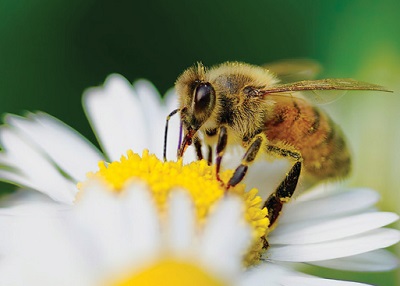World Honeybee Day: Save the Bees
August 5, 2023
Every year on the
third Saturday of August, the world comes together to celebrate
World Honeybee Day. This special day recognizes the remarkable contribution of honeybees to our environment, food systems and overall well-being.
Honeybees are not only responsible for producing honey, but also serve as essential pollinators for numerous flowering plants, including fruits, vegetables, nuts and flowers. Their role in the pollination process is vital for the reproduction and genetic diversity of these plants. By pollinating wild plants, they support the survival of various animal species and help sustain natural habitats.
It is estimated that that a bee can pollinate 50-1000 flowers in one trip. At least one-third of our food depends on pollination. Farmers plant hedgerows and field borders for a biodiverse habitat. But bees get most of their nectar from trees because there are hundreds, if not thousands of blossoms. Tree leaves and resin provide great foraging and nesting sites for bees too. We can help bees by planting more maples, red buds and black cherry trees.
Another way we can help bees is by planting a pollen and nectar rich environment with plants that provide a variety of colors, shapes, sizes and bloom times. Bees are attracted to coneflowers, mint, asters, sunflowers, black-eyed- susans, lavender, basil, and other blooms.
Protect bees by reducing the use of pesticides, and choosing alternative or organic gardening techniques.
You can also set up a bee water garden by filling a shallow bird bath or bowl with clean water. Then arrange pebbles and stones inside that break the water’s surface. The bees will land on them and take a much-needed drink.

